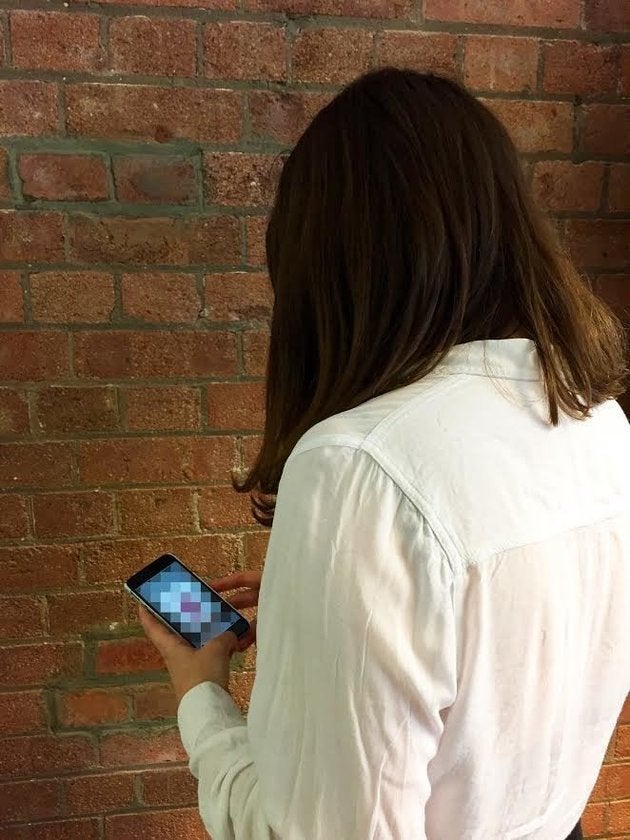When John* was in his early twenties he used to sit alone in his room, on his bed, and send women unsolicited dick pics over the internet. “I’m not sure I can adequately explain why I did it,” he says, reflecting on the handful of times he sent them – he hasn’t since. “I found it so incredibly arousing that something took over me. There was no thinking. Just doing”.
Adults mutually exchanging sexual images is not a new phenomenon, but there is evidence that the UK is seeing a rise in cyber flashing – the sending of unsolicited dick pics via AirDrop on iPhone or other social media. There is a shortage of data, but statistics suggest that as many as 41 per cent of women have received sexual images they hadn’t asked for: 46 per cent of whom were under 18 when they were first sent them.
Laura Thompson, a lead researcher in this area at City University, London, describes cyber flashing as the digital equivalent of standing on a street corner in a trench coat. But the men doing it don’t seem to equate their behaviour with a crime of indecent exposure.

Richard*, for instance, who thinks that just 30 per cent of the pictures he has sent to women have been requested by the recipient, compares his comprehension of the situation to that of an unwitting animal. “A cat drags a dead mouse home to owners as a ‘gift’,” he says. “Cat thinks it is doing something good but the owners don’t like it sometimes.”
Some attribute this wilful disconnect to the continued legal ambiguity around cyber flashing. Although perpetrators can be prosecuted under the Indecent Displays Control Act (1981) – and the Sexual Offences law if the victim is under 18 – the law is largely outdated. As a result, MPs have been forced to call for a new law to specifically legislate against cyber flashing.
But does something need to be illegal for people to understand it’s not morally OK? Not only does this portray men as emotionally tone deaf, it also ignores the volume of conversation telling men that women do not want to be sent unsolicited sexual images. I’ve widely reported on the way these pictures make women feel, and the steps they are having to take in order to protect themselves from them and know that Twitter is full of women expressing their upset; you only need search for tweets with the phrase ‘AirDrop dick pics’.
And according to YouGov poll data from earlier this year, a large proportion of those sending pictures do understand that recipients didn’t want them: 46 per cent of men who admitted to sending a dick pic said they thought women found them distressing, and 44 per cent thought women found them threatening. Yet women continue to receive them.
Peter Saddington, a Relate counsellor, says: “In a sense, there are some similarities to couples where domestic abuse is happening. Society, and the women themselves, are saying this is not acceptable but men still do it.”
Sean* blames sexual frustration for his decision to cyberflash women. He had just come out of his first serious relationship and wanted to be more sexually active, so started using dating apps. When women ended online conversations ‘prematurely’ – ie: too early in his view – he would lash out.
“I was too impatient many times, and if [after some brief chat] I didn’t get a response from them, I’d sometimes send a dick pick,” he says. “My logic at the time was, well they have already lost interest so what do I have to lose?”
“Since most women aren’t into it, the purpose is pretty explicitly ‘well, fuck her’. It’s meant to offend..."”
Michelle Zelli, a London-based relationship coach who works with lots of couples and single men, says she has seen numerous clients responsible for sending pictures who have been lacking in empathy – men who feel their own sexual needs outweigh the feelings of the recipients of these pictures.
A recent government report from the Women and Equalities committee, which called for the new law to target this abuse, said it recognised that harassment of this kind is born out of notions of male power and entitlement – and some men do accept this. Some I talked to for this article admitted men do know it’s unacceptable – but they don’t care.
“Men know that women generally don’t like unsolicited dick pics,” notes Charlie*. “They don’t care. They have the mentality of: ‘If she’s into it, great. If she’s not, fuck her.’ Since most women aren’t into it, the purpose is pretty explicitly ‘well, fuck her’. It’s meant to offend.”
John, who spent his early 20s sending pictures, explains that for some men any kind of acknowledgement (even if it’s bad) feels better than being ignored completely. “It’s similar to an ignored toddler drawing on the walls or a neglected puppy or dog chewing up items they usually ignore,” he says.

Of those men who shared their thoughts and experience with HuffPost UK – we received more than 100 responses via email and social media messages - Simon was among the few to admit that the taboo nature of airdropping pics actually made it a more pleasurable experience. “There’s a surge of anxiety and adrenaline because it’s fairly taboo a concept – but it also has minimal risk if that’s all you reveal. Some people get a kick out of causing discomfort.”
Thompson says this explanation resonates with some of her research findings: that intimidation is a key reason for sending unsolicited images, even if the men involved don’t recognise that themselves.
“One woman was having some sort of unpleasant online exchange with a man when he sent her the picture of his erection next to a knife. It was a threat but also a sexualised one where – through the image – he equated his penis with the knife as a weapon, as something with the potential to hurt,” she says.
Although Thompson acknowledges that is at the extreme end of the spectrum, she argues that it plays into the rationale of all cyberflashers – there’s an entitlement to push yourself onto someone; whether that’s perceived as threatening is a secondary concern.
Other men we spoke to continued to argue that intimidation is far from their intention – and that the issue is one of ignorance; that society is making sex and relationships between men and women difficult to navigate. Alex*, for instance, argues that there are mixed messages about what constitutes flirting, and men are confused about what’s acceptable.
″[It is all] incredibly confusing at best and utterly contradictory at worst,” he says. “Be confident and forward. Don’t be creepy. Don’t talk to us casually on the bus. Be clear from the start about your intent. Consent is always necessary. It’s a turn off to be asked before being kissed. Chase the girl and eventually you’ll get her. Grandiose moves are desperate and weird. Big displays of affection are adorable. On and on.”
Better laws might help make some of that clearer. Last month, a new report on harassment of women and girls by the House of Commons Women and Equalities Committee called for a new law in this area. But, Maria Miller MP, chair of the committee, also noted that there must be cultural change. “We must confront some deeply uncomfortable truths about our society and the attitudes some men hold. Laws alone cannot solve the cultural acceptability of sexual harassment,” she said, launching the report.
“The government needs to be more forward-looking when tackling the ways in which technology is facilitating sexual harassment, rather than forever racing to catch up with changing ways in which perpetrators sexually harass women and girls.”
*The names in this article have been changed to offer anonymity to interviewees.